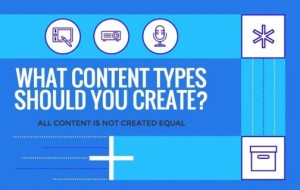A little pet peeve of every editor (especially this one) is an article that is artificially long, with lots of fluffy filler words that don’t really say anything. Drives me nuts. So when I edit a piece, I imagine that I’m a ruthless management consultant for a cost-cutting corporate behemoth, and that each and every word is a salary-drawing employee. I go around the “office” and I ask each one of those words a question.
Needless to say I make ample use of the delete button.
I mention this because one of the questions I hear most often about writing is a practical one: How long should a blog post be ?
Most of the time, people are hoping I’ll give them a nice, low number. They assume that writing short is easier than writing long. A 500-word post takes half as much work to produce than a 1,000-word post, the thinking goes. On the other hand, that same logic would tell you that a post of half the length is only half as valuable.
But neither of these assumptions is quite right. Writing a short post is sometimes easier than writing a long one, but not always; self-editing is one of the hardest skills for writers to learn, and many are much better at writing twice as many words as they should than they are at writing only the number of words that they need. A post is not better just because it’s longer.
And neither is a shorter post necessarily less valuable. There are many perfectly legitimate reasons that a post may run just a few hundred words (or even fewer). It may be that you’re only trying to make a few points, and you can make them quickly and succinctly. There’s nothing wrong with that; in fact, as a general rule, it’s best if your posts are of varying length. Readers appreciate the break.
Or perhaps you’ve just discovered a study, graphic, video, or some other piece of visual content that perfectly complements a point you made the other day. You can remind folks of your earlier point with a link to the new item and a few words of commentary from you. It’s an epilogue: no need to dive back in to the deeper discussion.
A master of this technique was Andrew Sullivan, who started blogging on news and politics in the 1990s before anyone knew what a blog was. He mostly-retired from the blogging game earlier this year but before he did, he was building a paid subscriber base to his online journal of short pithy blog posts, links to other items of interest, and the occasional magazine-feature-length opus. He’d often start by writing long on a theme that caught his fancy, then return to that theme again and again with new data, another blogger’s commentary, or a quote.
Each time, this would start a whole new discussion – or start an old discussion anew – among his readers.
None of those posts were “too long” or “too short.” Each post was complete: that is, just as long as it needed to be to meet its own purposes, and no longer.
And that’s how long your blog posts should be, too.
For a long or short conversation on best practices for corporate blogs, feel free to get in touch with us.
(244)







